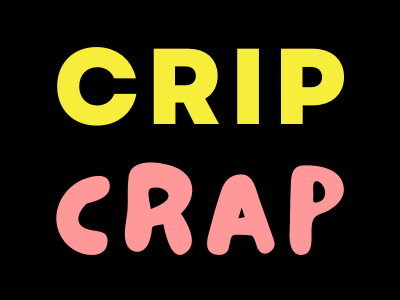The Category is: Disability Justice History in Pose
By Joy Michael Ellison
Pose, FX’s fictional series set in New York City’s ballroom community, has been rightly hailed as groundbreaking. The series, now in its third and final season, has provided a much-needed life-affirming, empowering representation of transgender women of color. Equally important, it has employed trans actresses, writers, and directors, all in positions of relative power. This year, Mj Rodriguez, who stars as house mother Blanca Evangelista, made history as the first transgender nominee for a Best Actress Emmy.
Pose, however, shines for another reason that has been widely overlooked: it has some of the best representations of disability on TV.
By grappling with the impact of the AIDS crisis on Blanca Evangelista and her house children, the show stumbles its way into plotlines that are all about disability. That may not have been the intention of Janet Mock and the rest of the writers, but the results are still legendary.
Pose offers some of the most fully realized disabled characters on television. Blanca, Ricky, and Prey Tell all live full, messy, glorious, and very different lives, while HIV+. While the show doesn’t center on their illnesses and impairments, it never shies away from the impacts of their disabilities either.
But what makes Pose’s disability representation even more unique is its attention to the politics of the AIDS crisis. By presenting an intersectional account of the crisis and the community’s response to it, Pose preaches disability justice.
Disability justice is a political framework established by disabled people of color and queer and trans disabled people. It works for the liberation of disabled people through an intersectional approach that sees disability as intermeshed in broader systems of power. In this blog post about disability justice, Patty Berne, one of the movement’s creators, defines the movement in this way:
“A Disability Justice framework understands that all bodies are unique and essential, that all bodies have strengths and needs that must be met. We know that we are powerful not despite the complexities of our bodies, but because of them. We understand that all bodies are caught in these bindings of ability, race, gender, sexuality, class, nation state and imperialism, and that we cannot separate them.”
This disability justice wisdom is strikingly similar to the sensibility that informs Pose as a whole. We see it especially clearly when the series portrays the intersectional struggle against the political and economic conditions that worsened the impact of HIV/AIDS on the ballroom community.
Previously, we saw Pose’s adept handling of disability politics in the second season of the show when it recreated some of ACT UP’s most iconic protests.
ACT UP activists did cover a house in a condom, just like Lulu, Damon, and Ricky, and you can watch them do it. In real life, the house in question belonged to Senator Jesse Helms and activists raised the condom for about an hour.
Likewise, The Stop the Church protest in which the House of Evangelista participates was very real. Five thousand people protested Cardinal John O’Connor’s public stand against AIDS education and condom distribution and the church’s opposition to abortion. 111 people were arrested, just like Pray Tell mentions.
In these two episodes, Pose captures the general attitude toward ACT UP activists in the 1990s. Queer and trans people were treated like HIV carriers and stigmatized in a way that combined homophobia and ableism, as well as racism and transmisogyny.
In the series finale of the show, Pose’s depiction of disability justice matures further as they tackle the issue of racism within HIV research and highlight how the expense of lifesaving drug cocktails impacted queer and trans people of color. In a moving scene, Pose recreates ACT UP’s Ashes Actions that dramatized the deaths caused by the George H.W. Bush administration’s failure to act to stop the crisis.
Pose also broadens its portrayal of activism to include cultural work and mutual aid, two important parts of disability justice struggles. In the final episodes of the series, Pray Tell reveals to Ricky that he has begun singing in the Gay Men’s Choir. Because AIDS has caused him increasing physical impairments, including blindness and limited mobility, ACT UP demonstrations are now largely inaccessible to him. The choir, he says, is his activism. It’s another beautiful story grounded in real history and the choir’s performances are exquisite and moving.
Pose also shows the importance of the ballroom community to people living with AIDS. The MC council mentions the ballroom fund for people living with AIDS. Although the moment is brief, the scene provides another moving example of queer and trans people of color coming together to support their disabled community members.
There are some limitations to Pose’s disability representation. The word disability only shows up in one scene, when Blanca balks at Judy’s suggestion that she go on SSI benefits. Nonetheless, Pose offers a crucial and joyful example of people living with AIDS. The series deserves a watch. You don’t want to miss seeing Pray Tell rock a cane.
Joy Michael Ellison is a disabled writer, scholar, and activist. They are the author of Sylvia and Marsha Start a Revolution, a picture book about Sylvia Rivera and Marsha P. Johnson. Their LGBT opinion column Rainbow Rant biweekly appears in Columbus Alive and they are a card-carrying regular at the Writer’s Block Poetry Night. They are currently completing Ph.D. in Women’s, Gender, and Sexuality Studies at Ohio State University. Their dissertation Coalitions at the Crossroads: Transgender History in the Midwest, 1945-2000 will be the first community-based, regional history of transgender communities in the United States. You can support their work on Patreon.

